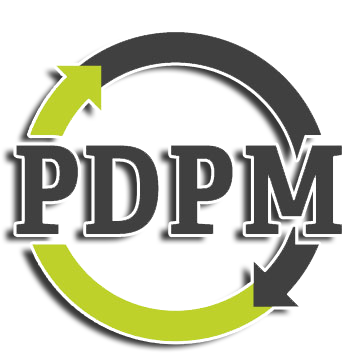PDPM TRANSITION PREPARATION

The following is a message from American Health Care Association (AHCA) President and CEO Mark Parkinson that was released this past Monday.
As we approach implementation of the new Patient-Driven Payment Model (PDPM), I want to make sure you have last minute tips and resources to be successful and ensure facilities are correctly and adequately reimbursed. You will receive a weekly email with important information on critical areas of PDPM as we head into October 1 and post-implementation. I hope you find this information helpful.
PDPM Transition Preparation – 24 Days Out
With only 24 days until PDPM goes live, skilled nursing facilities (SNFs) should be assessing, testing, and making improvements in frontline staff preparedness and systems readiness using real time drills on a variety of PDPM-critical functions. Over the next three weeks, I’ll be highlighting key action steps you should have underway.
Beta Test Information Technology Functions. PDPM is a complex system which requires a far more detailed collection of patient clinical information and diagnoses than under the soon-to-end Resource Utilization Group (RUG IV) system.
- SNFs should have requested patient classification simulations and compared those simulations with the outcomes from manual classifications conducted on the same patients but by clinicians.
- SNFs should assess medical information storage and how new PDPM clinical information is collected and used to keep the care plan current.
- Assessing how Minimum Data Set (MDS) information flows to billing offices is critical. With 188 MDS items driving payment, and several requiring ICD-10 codes, communication between clinical systems and billing systems is essential.
Review PDPM Transitional Interim Payment Assessments (IPA) Capacity. In October, SNFs must convert all Part A fee-for-service (FFS) patients to PDPM using a Transitional IPA. Converting all Part A patients to PDPM on one day, or handful of days, will likely be overwhelming and result in errors and payment problems. SNFs should have a plan to gather information on all September admissions as if they are PDPM admissions.
- Starting to conduct September admissions as if they were PDPM admissions is both good practice for admissions and interdisciplinary team staff and will reduce burden in October.
- Use the September “dress rehearsals” to assess your Return to Provider rate and implement strategies to reduce the rate if it is high.
- SNFs should also have a schedule for Transitional IPAs so the assessments are not all clustered around a handful of days.
Next week, I’ll highlight must dos with testing your Initial Medicare Assessment policies and procedures and optional Interim Payment Assessments. In my last 11th hour installment, I’ll share thoughts on how you should approach Interrupted Stays and Medicare PPS Discharges.
I strongly urge SNFs to register for AHCA’s upcoming webinar: Week One of PDPM – “One-Time” Transitional Policies on Tuesday, September 17 from 3-4:30 pm EST. Also, be sure to check out CMS’ August 30 updates to its PDPM materials located here. The updated materials have a date stamp of 8/30/19 next to them and the CMS changes are in track changes.
Please email pdpm@ahca.org with any questions.
Sincerely,
Mark Parkinson
President & CEO
![North Carolina Health Care Facilites Association [logo]](https://www.nchcfa.org/wp-content/themes/nchcfa/images/logo.png)

